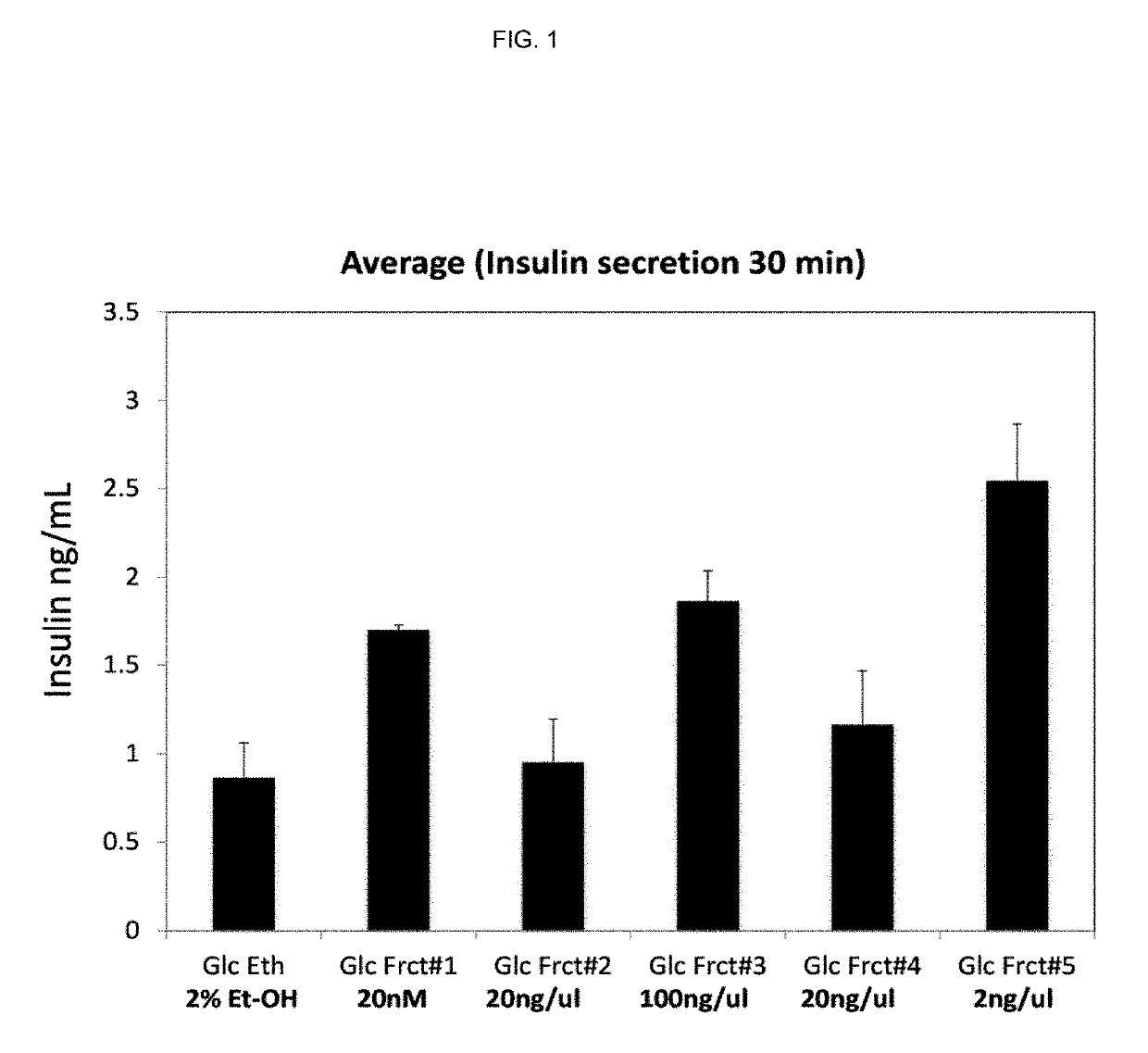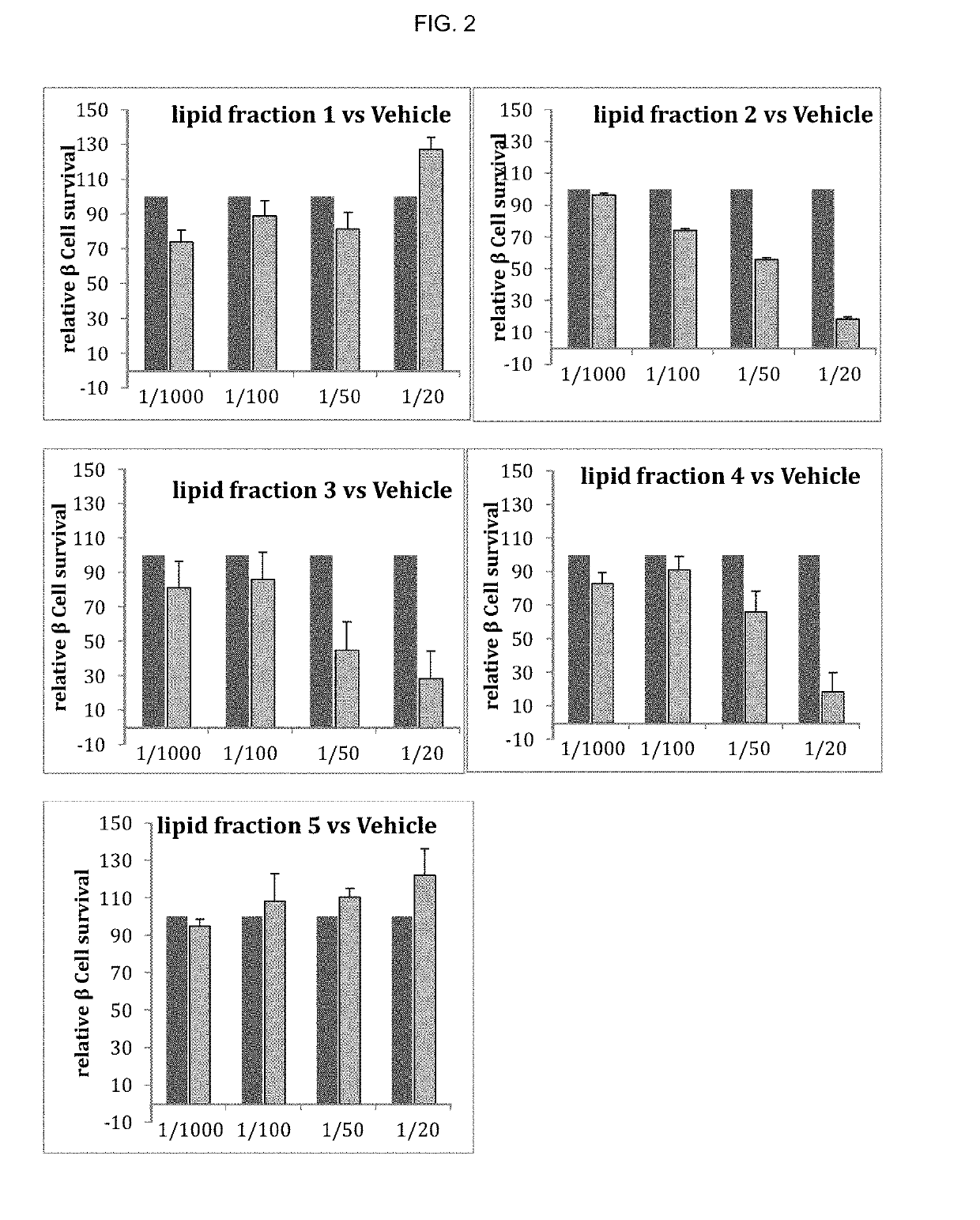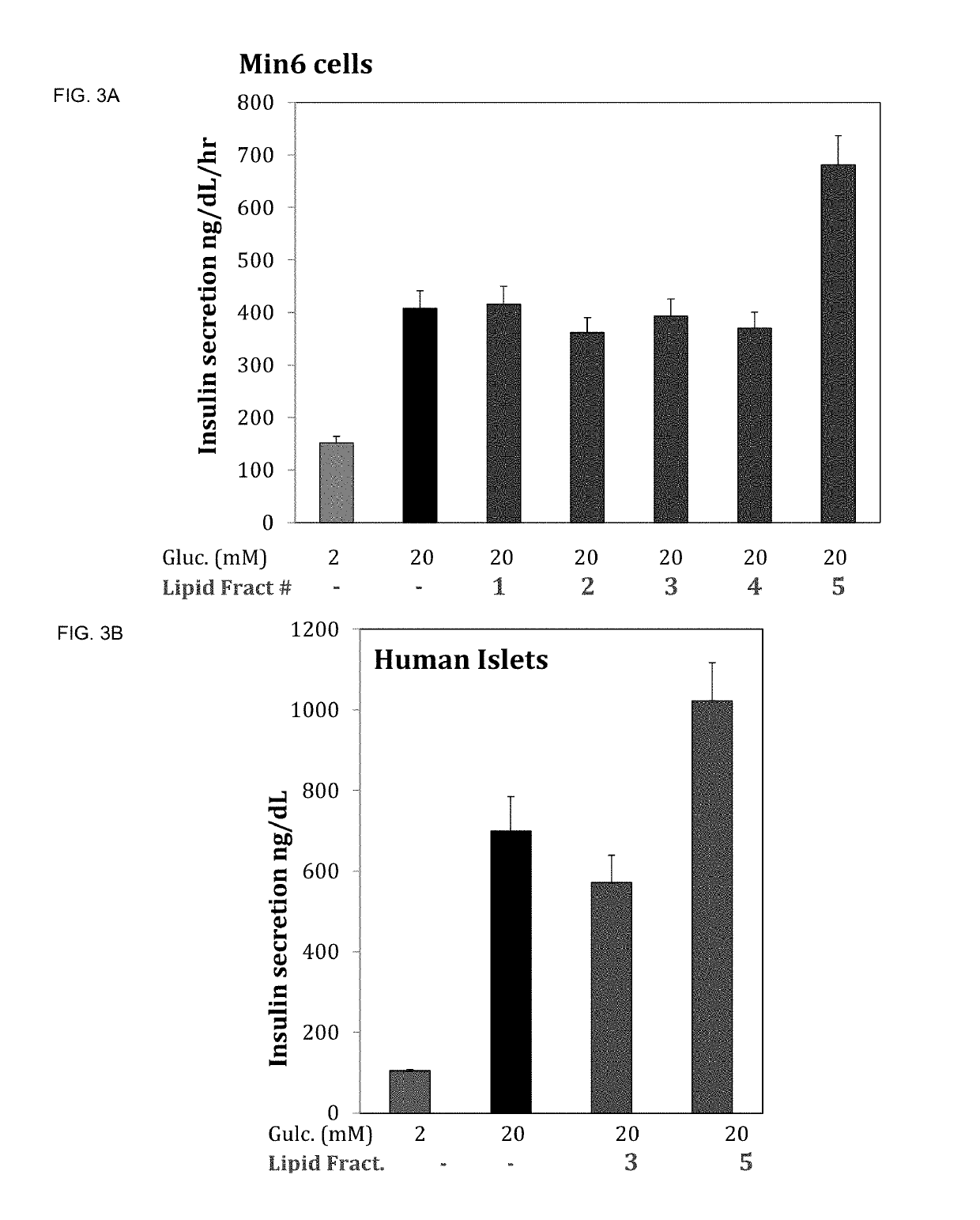Uses of bioactive lipids
a bioactive lipid and lipid technology, applied in the field of treating and/or preventing an inflammatory disease, can solve the problems of unsuitable regulation, increased risk of infectious and non-infectious diseases for many elderly subjects, and unwanted side effects
- Summary
- Abstract
- Description
- Claims
- Application Information
AI Technical Summary
Benefits of technology
Problems solved by technology
Method used
Image
Examples
example 1
mulation of MIN6 Cells with Bioactive Lipid Fractions
[0188]MIN6 cells were cultured in complete DMEM medium at 70 to 80% confluent. To measure the acute effect of bioactive lipid fractions on glucose stimulated insulin secretion (GSIS), cells were starved in low glucose medium (Krebs Ringer Buffer Hepes or KRBH plus 2 mM glucose) for 2 hours before stimulation with 20 mM glucose in the presence of bioactive lipid fractions (1:50 dilution in KRBH 20 mM Glc) for 30 minutes. The effect of bioactive lipid on GSIS was compared to the control glucose plus vehicle (2% Ethanol). Insulin secretion was measured using the insulin ELISA kit (Mercodia).
[0189]These data show that there is a synergistic effect of the bioactive lipids on GSIS (FIG. 1).
example 2
Chronic Treatment with Lipid Fractions on Beta Cell Function and Survival
[0190]To determine whether long-term treatment with bioactive lipids affected beta cell function and survival, the MIN6 beta cell line was treated with increasing concentrations of bioactive lipids (from 1:1000 to 1:20 dilution) in DMEM medium for 48 hrs (see Table 1). In the chronic treatment experiment, the bioactive lipids were removed from the medium at the end of the pretreatment and cellular function was assessed after glucose stimulation. Cell survival and proliferation was assessed by counting cell number compared to the baseline of vehicle treated cell normalized to 100%.
TABLE 1Dilution1:10001:1001:501:20Ethanol0.1%1%2%5%Fraction 11nM10nM20nM50nM(1 uM)Fraction 21ng / ul10ng / ul20ng / ul50ng / ul(1 ug / ul)Fraction 35ng / ul50ng / ul100ng / ul250ng / ul(5 ug / ul)Fraction 41ng / ul10ng / ul20ng / ul50ng / ul(1 ug / ul)Fraction 50.1ng / ul1ng / ul2ng / ul5ng / ul(0.1 ug / ul)
[0191]At the highest concentration of bioactive lipid only fractions...
example 3
etermination of the Effect of Bioactive Lipids on Beta Cell Function
[0194]Isolation of pure bioactive lipid species from lipid fraction 5 was performed by further fractionation using liquid chromatography. Five sub-fractions were isolated and tested to determine if they acutely stimulated insulin secretion in the presence of glucose.
[0195]Insulin secretion was measured in MIN6 cells under starving condition (2 mM glucose) or after stimulation with 20 mM glucose or 20 mM glucose plus bioactive lipids at a 1:100 dilution for 15 minutes. Insulin secretion was measured by ELISA.
[0196]Fraction 5 synergistically increased insulin secretion in the presence of glucose, but the sub-fraction 5.3 augmented insulin secretion nearly three fold above glucose alone (FIG. 4).
[0197]To determine the effect of long-term treatment, MIN6 cells were treated with the enriched bioactive lipid sub-fractions for 72 hrs in a 1:1000 dilution before performing GSIS (FIG. 5). All the sub-fractions substantially ...
PUM
| Property | Measurement | Unit |
|---|---|---|
| temperature | aaaaa | aaaaa |
| voltage | aaaaa | aaaaa |
| concentration | aaaaa | aaaaa |
Abstract
Description
Claims
Application Information
 Login to View More
Login to View More - R&D
- Intellectual Property
- Life Sciences
- Materials
- Tech Scout
- Unparalleled Data Quality
- Higher Quality Content
- 60% Fewer Hallucinations
Browse by: Latest US Patents, China's latest patents, Technical Efficacy Thesaurus, Application Domain, Technology Topic, Popular Technical Reports.
© 2025 PatSnap. All rights reserved.Legal|Privacy policy|Modern Slavery Act Transparency Statement|Sitemap|About US| Contact US: help@patsnap.com



